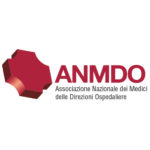
Never administer antibiotics for perioperative prophylaxis before 60 minutes prior to surgical incision*; the ideal time is upon induction of anesthesia.
Perioperative Antibiotic Prophylaxis (PAP) is an effective measure for the prevention of Surgical Site Infections (SSI), where indicated. However, its inappropriate use contributes significantly to total antibiotic consumption in hospitals and has been associated with increases in antimicrobial resistance (AMR) and health care costs. Antibiotic administration within 30-60 minutes from the beginning of the skin incision determines an effective antibiotic concentration both in the serum and in the tissues involved, reducing the risk of post-operative infections. The guidelines state that some antibiotics require administration over 1-2 hours, such as fluoroquinolones and vancomycin, restricting their prophylactic use only when local antimicrobial stewardship programs recommend their administration. Therefore, the administration of these antibiotics should exceptionally begin within 120 minutes prior to the surgical incision.
* subject to exceptions.
Sources
1. European Centre for Disease Prevention and Control. Systematic review and evidence-based guidance on perioperative antibiotic prophylaxis. Stockholm: ECDC; 2013.
2. SNLG 17. Antibioticoprofilassi perioperatoria nell’adulto. Linee guida 2008, aggiornamento 2011. Disponibile su: http://www.snlg-iss.it/cms/files/LG_AntibioticoP_Unico_2008.pdf.
3. World Health Organization. Antimicrobial Resistance Global Report on surveillance 2014. Disponibile su: http://www.who.int/drugresistance/documents/surveillancereport/en/.
4. World Health Organization. Global Guidelines for the Prevention of Surgical Site Infection, second edition. WHO 2018. Disponibile su: https://www.who.int/publications/i/item/global-guidelines-for-the-prevention-of-surgical-site-infection-2nd-ed
5. Berríos-Torres SI, Umscheid CA, Bratzler DW, et al. Centers for Disease Control and Prevention Guideline for the Prevention of Surgical Site Infection, 2017. JAMA Surg. 2017;152(8):784–791.
6. Adekoya I, Maraj D, Steiner L, Yaphe H, Moja L, Magrini N, Cooke G, Loeb M, Persaud N. Comparison of antibiotics included in national essential medicines lists of 138 countries using the WHO Access, Watch, Reserve (AWaRe) classification: a cross-sectional study. Lancet Infect Dis. 2021 Oct;21(10):1429-1440.
7. Barchitta M, Sabbatucci M, Furiozzi F, et al. Knowledge, attitudes and behaviors on antibiotic use and resistance among healthcare workers in Italy, 2019: investigation by a clustering method. Antimicrob Resist Infect Control. 2021 Sep 10;10(1):134.
Download
PDFAttention. Please note that these items are provided only for information and are not intended as a substitute for consultation with a clinician. Patients with any specific questions about the items on this list or their individual situation should consult their clinician.


Recent Comments